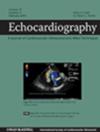Effects of Electrode Thickness on Tricuspid Regurgitation and Radiation Exposure in Single-Chamber Implantable Cardioverter Defibrillators
Abstract
Background
Currently, cardiac devices are widely used, and the effects of the electrodes of these devices on the tricuspid valve are being investigated. This study aimed to prospectively investigate, using two-dimensional echocardiography, the impact of electrode thickness on the development of tricuspid regurgitation (TR) and operator radiation exposure during the implantation of single-chamber implantable cardioverter-defibrillators (VVI-ICDs).
Methods
This prospective study included 61 patients treated at a single center between March 2023 and January 2024. Among these, 31 patients received 9F electrodes, and 30 patients received 7F electrodes. Initial echocardiographic evaluation was conducted 1 day before device implantation (T0). Follow-up evaluations were performed 1 day (T1) and 1 month (T2) after implantation. Tricuspid regurgitation was assessed using two-dimensional (2D) echocardiography and classified into grades 1–4 based on vena contracta and proximal isovelocity surface area measurements. A worsening of TR by one grade or more was deemed significant. Electrode implantation times and radiation doses were recorded during the procedures. At the 1-month follow-up, device interrogation was performed, and pacing percentages were documented.
Results
Baseline echocardiographic parameters were comparable between the two groups. No significant TR worsening was observed at T1 in either group (p = 1.00). At T2, TR worsening was significantly more prevalent in the 9F group (p = 0.033). However, the 7F group demonstrated significantly longer electrode implantation times (p = 0.014) and higher total radiation exposure (p = 0.011). No deterioration in right heart function was observed in either group during the 1-month follow-up.
Conclusions
The use of thinner electrodes in VVI-ICD implantation may reduce electrode-related TR worsening. However, thinner electrodes are more challenging to implant, resulting in prolonged procedure times and increased radiation exposure for the operator. Further large-scale prospective studies are needed to confirm these findings.


 求助内容:
求助内容: 应助结果提醒方式:
应助结果提醒方式:


